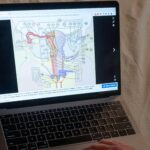Table of Contents
Introduction
Parkinson’s disease is a progressive neurological disorder that primarily affects movement. Early detection is crucial for managing symptoms and improving quality of life. This article will highlight seven early signs of Parkinson’s disease and provide effective strategies for managing its symptoms.
Early Signs of Parkinson’s Disease
Identifying early signs can lead to timely diagnosis and treatment. Here are seven common signs to watch for:
1. Tremors
Involuntary shaking often begins in one hand or finger, especially when at rest. While tremors can be common with aging, persistent shaking should prompt a medical evaluation.
2. Stiffness
Muscle rigidity can cause discomfort and limit mobility. Affected individuals may feel tightness in their arms, legs, or neck, impacting daily activities like dressing or typing.
3. Bradykinesia
This term refers to slowness of movement. Patients might experience difficulty initiating movements or completing simple tasks, leading to slower walking and reduced daily functioning.
4. Postural Instability
Balance problems and a stooped posture are common. Individuals may struggle to maintain an upright position or feel unsteady, increasing the risk of falls.
5. Changes in Handwriting
Known as micrographia, this condition leads to smaller, more cramped handwriting. It often occurs alongside other motor symptoms and may initially go unnoticed.
6. Changes in Speech
Individuals may experience softer voices, slurred speech, or a monotone delivery, making communication difficult and frustrating.
7. Reduced Facial Expressions
Known as a “masked face,” individuals may exhibit fewer facial expressions, affecting social interactions and personal relationships.

How to Manage Symptoms of Parkinson’s Disease
While there’s no cure for Parkinson’s, managing symptoms can enhance quality of life. Here are several effective strategies:
1. Medication
Levodopa: This medication replenishes dopamine levels in the brain and is commonly prescribed, often combined with carbidopa to enhance effectiveness.
Dopamine Agonists: These mimic dopamine’s effects and can be used alone or alongside levodopa to control symptoms.
2. Physical Therapy
Engaging in physical therapy can improve mobility, balance, and overall function. A tailored exercise program focuses on strength, flexibility, and coordination.

3. Occupational Therapy
Occupational therapists assist with strategies for daily activities, recommending adaptive equipment and home modifications to promote independence.
4. Speech Therapy
Speech-language pathologists help address communication difficulties, providing techniques to improve speech clarity and volume.
5. Healthy Lifestyle Choices
Diet: A balanced diet rich in fruits, vegetables, whole grains, and lean protein supports overall health. Foods high in antioxidants may combat oxidative stress linked to neurodegeneration.
Exercise: Regular physical activity—including aerobic exercise, strength training, and flexibility exercises—can enhance symptoms and overall well-being. Activities like yoga and tai chi are beneficial for balance.
6. Support Groups
Joining support groups offers emotional support and practical advice from others facing similar challenges. This connection can alleviate feelings of isolation.
7. Stress Management Techniques
Mindfulness, meditation, and relaxation techniques can help manage stress and improve emotional well-being, assisting in coping with the challenges of Parkinson’s disease.

Conclusion
Recognizing early signs of Parkinson’s disease is essential for timely intervention and effective management. By understanding these symptoms and employing the suggested management strategies, individuals can significantly improve their quality of life. If you or a loved one experiences these signs, consult a healthcare professional for a proper diagnosis and personalized management plan.
If you need more information or help with your health journey, feel free to contact us at Health Authentica.










